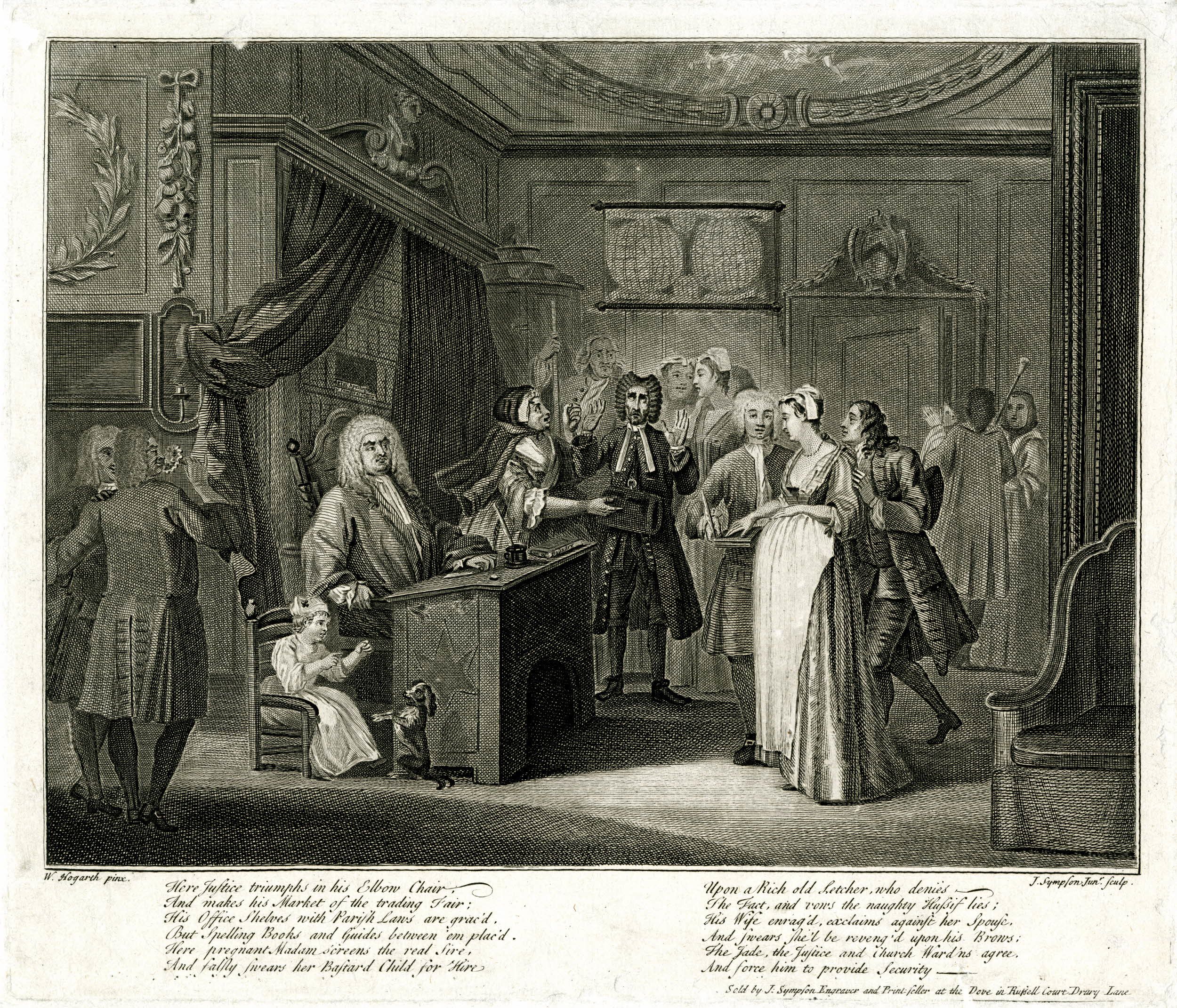Supporting London's bastard children
Cambridge historian uncovers new evidence of 18th and 19th century London's 'Child Support Agency'
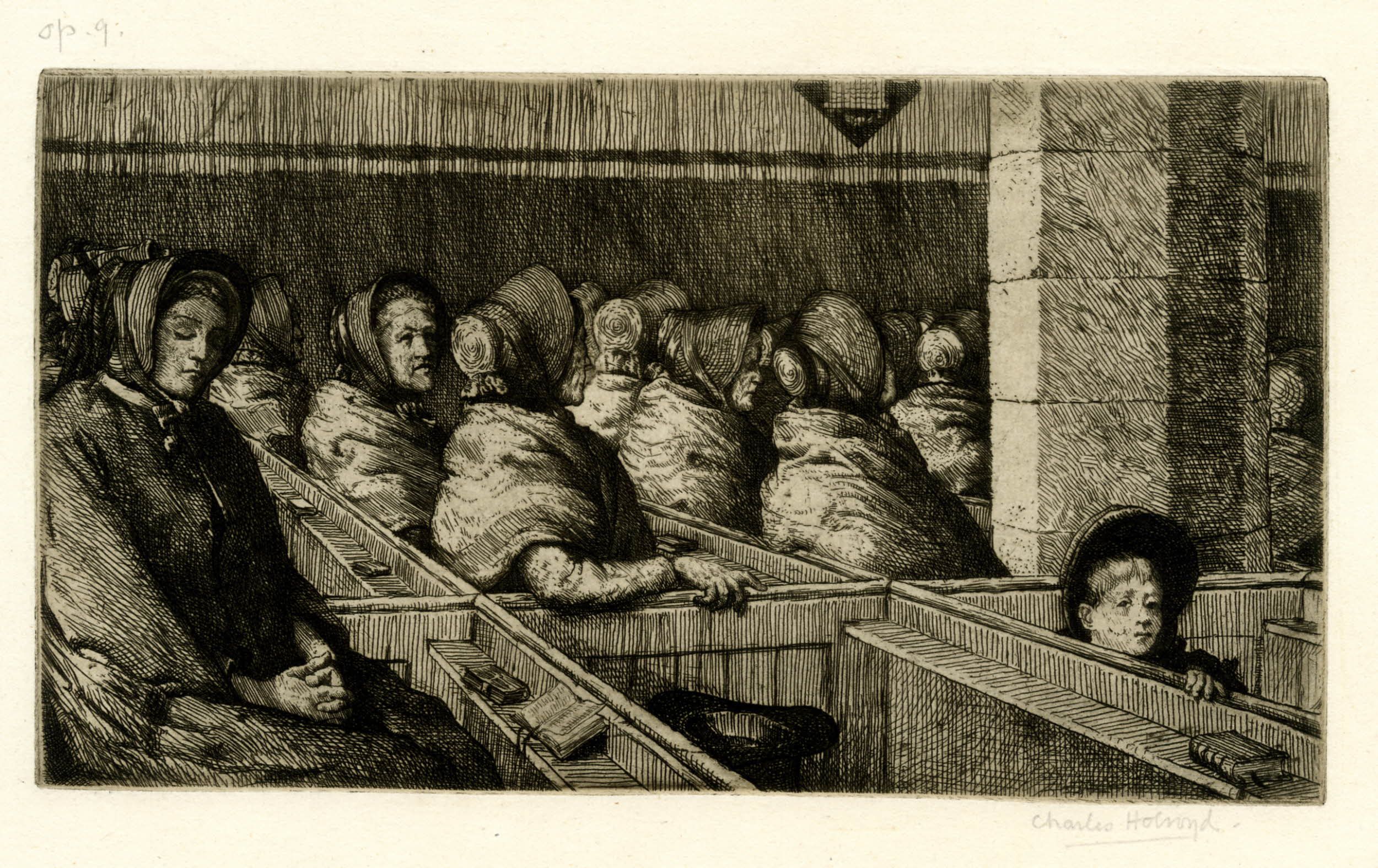
A new book, Unmarried Motherhood in the Metropolis: 1700-1850, by Cambridge historian Dr Samantha Williams, reveals, using London’s few surviving ‘bastardy books’, how the parishes of Lambeth, Southwark and Chelsea pursued the fathers of illegitimate babies.
It also reveals the lengths some errant fathers went to in order to escape not only their moral and financial obligations, but the clutches of parish constables and the feared houses of correction.
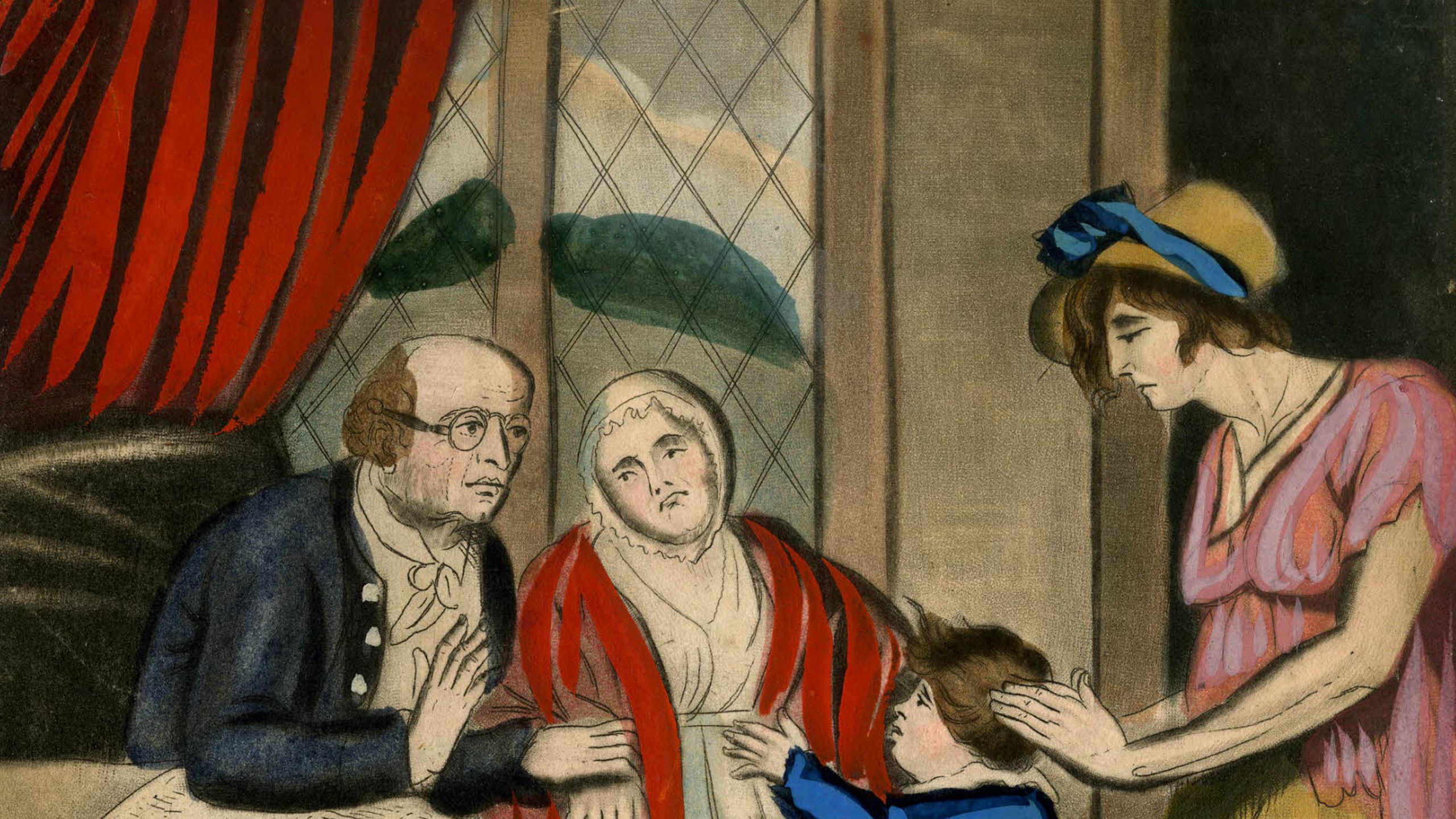
Dr Williams’ research uncovers how inefficient London’s parishes were at extracting payment from the fathers of bastard children compared to other areas of the United Kingdom.
Surviving records indicate that only 20 per cent of unmarried fathers paid for their illegitimate children in Britain and Europe’s largest city – compared with around 80 per cent in the West Riding of Yorkshire, for example.
However, even where fathers did not pay, metropolitan parishes continued to support illegitimate children, at times until they were 15 years old and at a relatively high weekly amount.
Dr Williams, a lecturer at Cambridge's Institute of Continuing Education (ICE), spent ten years researching the history of bastardy and poor law provision for the capital’s ‘fallen women’ and discovered that in Lambeth, a fifth of all fathers of illegitimate children were listed as ‘Titled/Gentlemen’ – despite making up only 7 per cent of that parish’s population at the time.
Other fathers were generally fellow servants or in working-class occupations.
Her research has also unearthed evidence of deep gender inequality in the law in the severity of punishments handed out to unmarried mothers and fathers with women sentenced, on average, to a year’s hard labour beating hemp for having children out of wedlock, compared to only three months’ imprisonment for men.
However, the proportion of unmarried mothers and fathers sent to jail fell significantly until punishment was relatively rare.
"We already know a lot about what women’s sex lives were like during this period of history: who the fathers of their children were, how many times they had sex – but what we didn’t really know was did the fathers pay for their offspring?
"Did these women end up in the workhouse? What the archives show is that there was a very early version of the Child Support Agency in place in all towns and villages.
"Bastardy books must have existed in many parishes, but very few now survive from the hundreds of parishes in and around London – at a time when illegitimacy was very high.
"The numbers of illegitimate children goes up and up after the Restoration from 1650-1850. Of all first births, half were pregnant brides and a quarter were illegitimate.
"It has always been the case that women were left holding the baby, and we know women and children went into the workhouses, but without looking at the bastardy examination records, you don’t know if those children were illegitimate or not."
Dr Samantha Williams
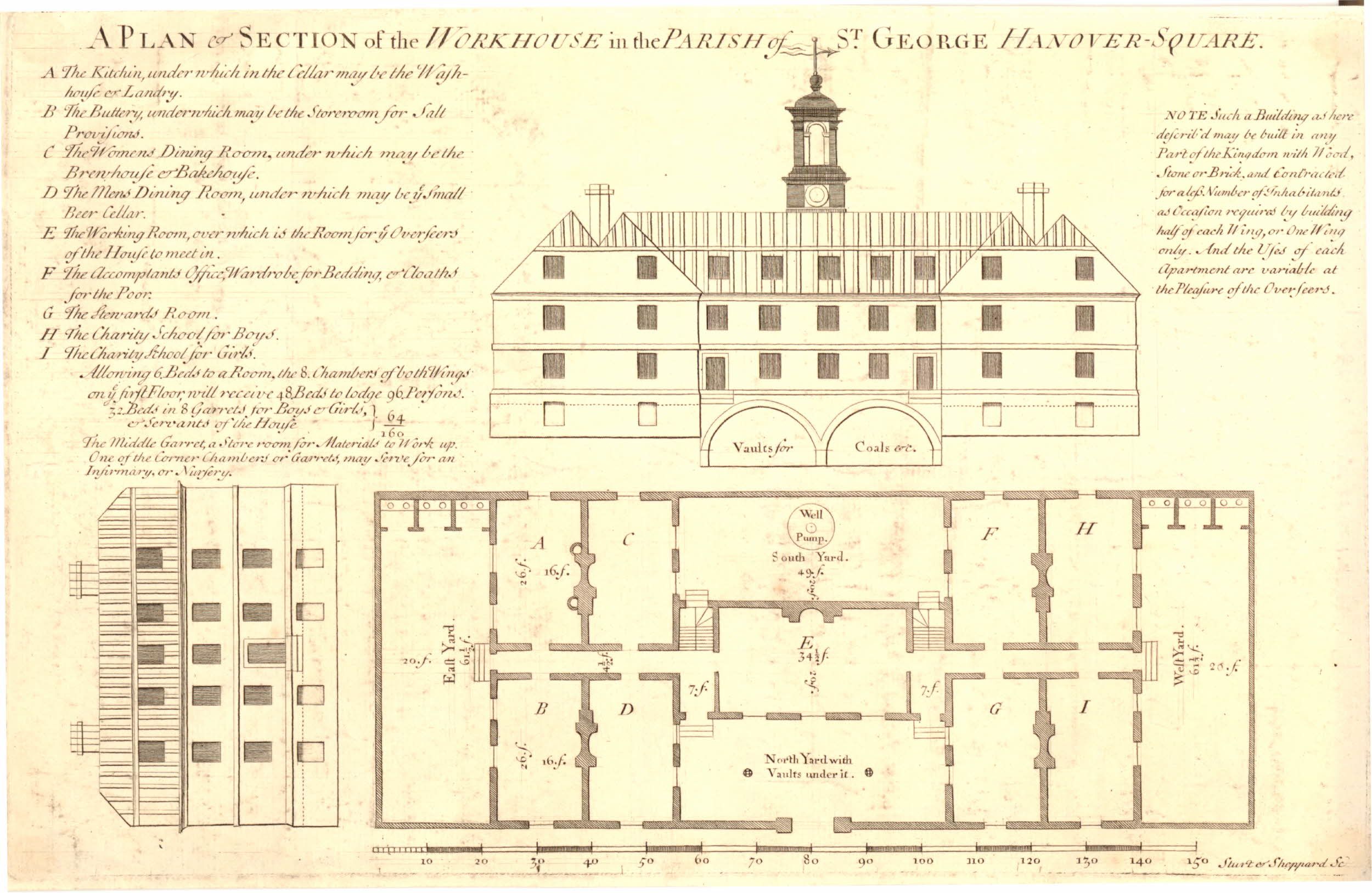
The Poor Law of 1576 formed the basis of English bastardy laws. Its purpose was to punish a bastard child's mother and putative father, and to relieve the parish from the cost of supporting the child.
The poor, unlike the rich, sometimes ended up in prison for having children out of wedlock – with babies ending up in houses of correction alongside their mothers to avoid the parish having to pay for a wet or dry nurse.
Whether they went to the house of correction or not, illegitimate children were even more at risk from the fearful rates of infant mortality.
Children born outside of marriage were around twice as likely to die as those born to married parents –a trend that continued until at least the early 20th century.
“The records show that although parish constables were actually quite skilled at finding fathers in the first place, they were really pretty bad at getting the money out of fathers in London,” added Williams.
“Men could disappear easily, they could join the navy – I even came across one case where one man fathered five illegitimate children - then disappeared off to America and left them all.
“Lots of men defaulted on payments and ran away, but for those who remained, arrest warrants were issued and many were sent to prison to see if they could be squeezed. Many were literally put on the treadmill, most infamously at Brixton’s House of Correction.”
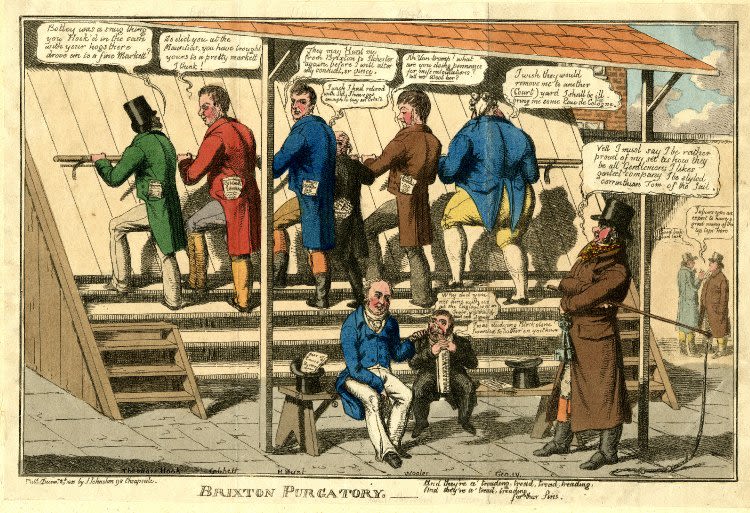
Six men stand on a treadmill, ascending its revolving and endless stair under a tiled pent-house roof; all hold a horizontal bar. On the extreme left is Theodore Hook, the man responsible for the 'Berners Street Hoax'. ©Trustees of the British Museum
Six men stand on a treadmill, ascending its revolving and endless stair under a tiled pent-house roof; all hold a horizontal bar. On the extreme left is Theodore Hook, the man responsible for the 'Berners Street Hoax'. ©Trustees of the British Museum
In 1824 David Byron was committed to the house of correction in Brixton for refusal to pay the bastardy expenses for his child Alfred with Susannah Turell. But he ‘got sick of the mill & paid the bill’. However, he fled to America leaving five illegitimate children behind him.
In January 1720, a Benjamin Lucas was ‘charged on oath & his own confession of begetting Eliz: Valsan with child of a bastard child which was born in the hamlet of Spittle Fields… & refusing to give sufficient security.’
In St. Margaret, Westminster, Martha Biggs was given ten shillings for clothing her child, surprisingly named Spriggs Biggs, when they both left the workhouse.
One winter’s day in November of 1792, Mary Roberts was brought before a London magistrate to be examined as to her parish of settlement. Mary had been born in St. Helen’s, Abingdon, but had travelled to London and had earned a new parish of settlement by dint of three years’ service with Mr Edwards of Danvers of Chelsea.
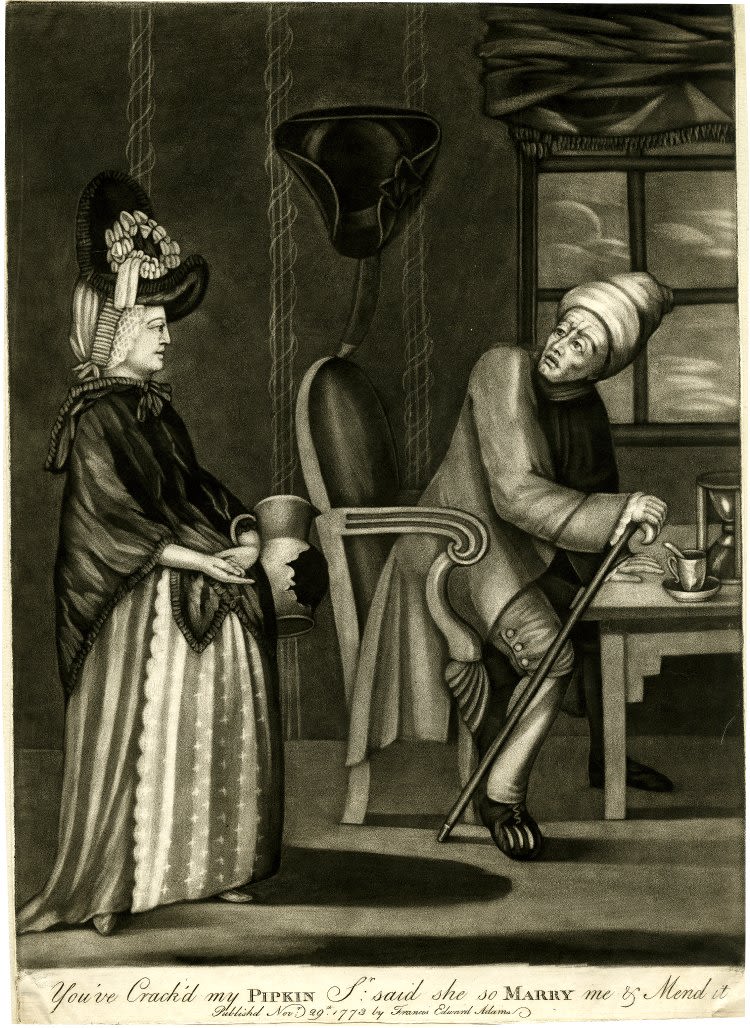
You've Crack'd my Pipkin Sr: said she so Marry me & Mend it, 1773. Social satire: a pregnant young woman gesturing at a cracked pitcher she holds at her waist and accusing a man who starts up in surprise and dismay. ©Trustees of the British Museum
You've Crack'd my Pipkin Sr: said she so Marry me & Mend it, 1773. Social satire: a pregnant young woman accusing a man who starts up in surprise and dismay. ©Trustees of the British Museum
She was visibly pregnant and told the justice that the father was Jonathan Johnson. Nine days later, Mary entered St. Luke’s workhouse on being ‘With child’ and stayed for twelve days before she ‘Went Out at her Own Request’.
The workhouse committee agreed to give her 3s. 6d. per week but she was back a month later; the reason for admission recorded as ‘Faind in Labour’. It seems that this was a false start and a month later her stillborn baby was born in the workhouse.
After four weeks ‘lying-in’, the workhouse committee ordered her out ‘her month being up’, with two shillings. It is likely that she returned to domestic service, like so many women in her circumstances.
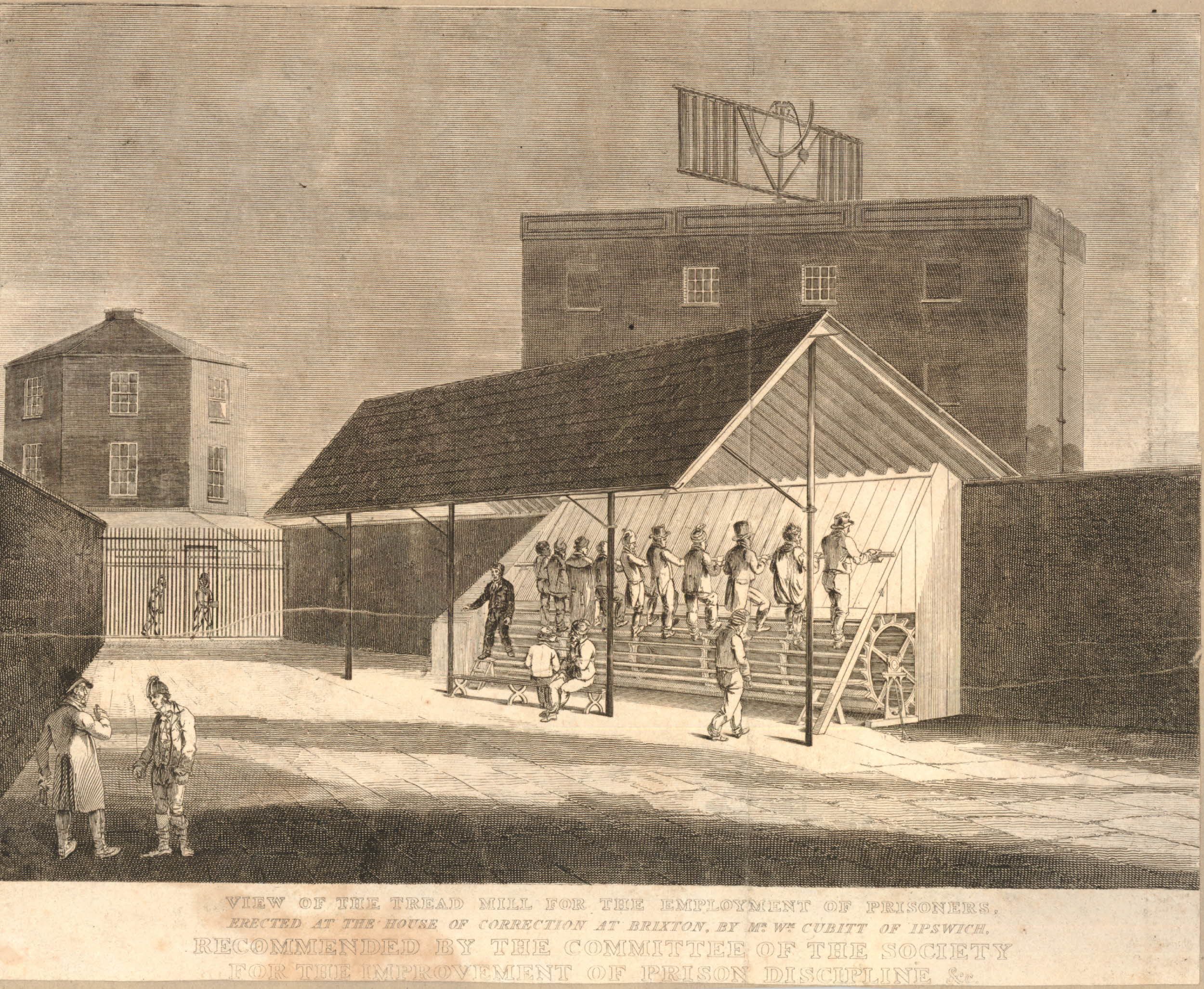
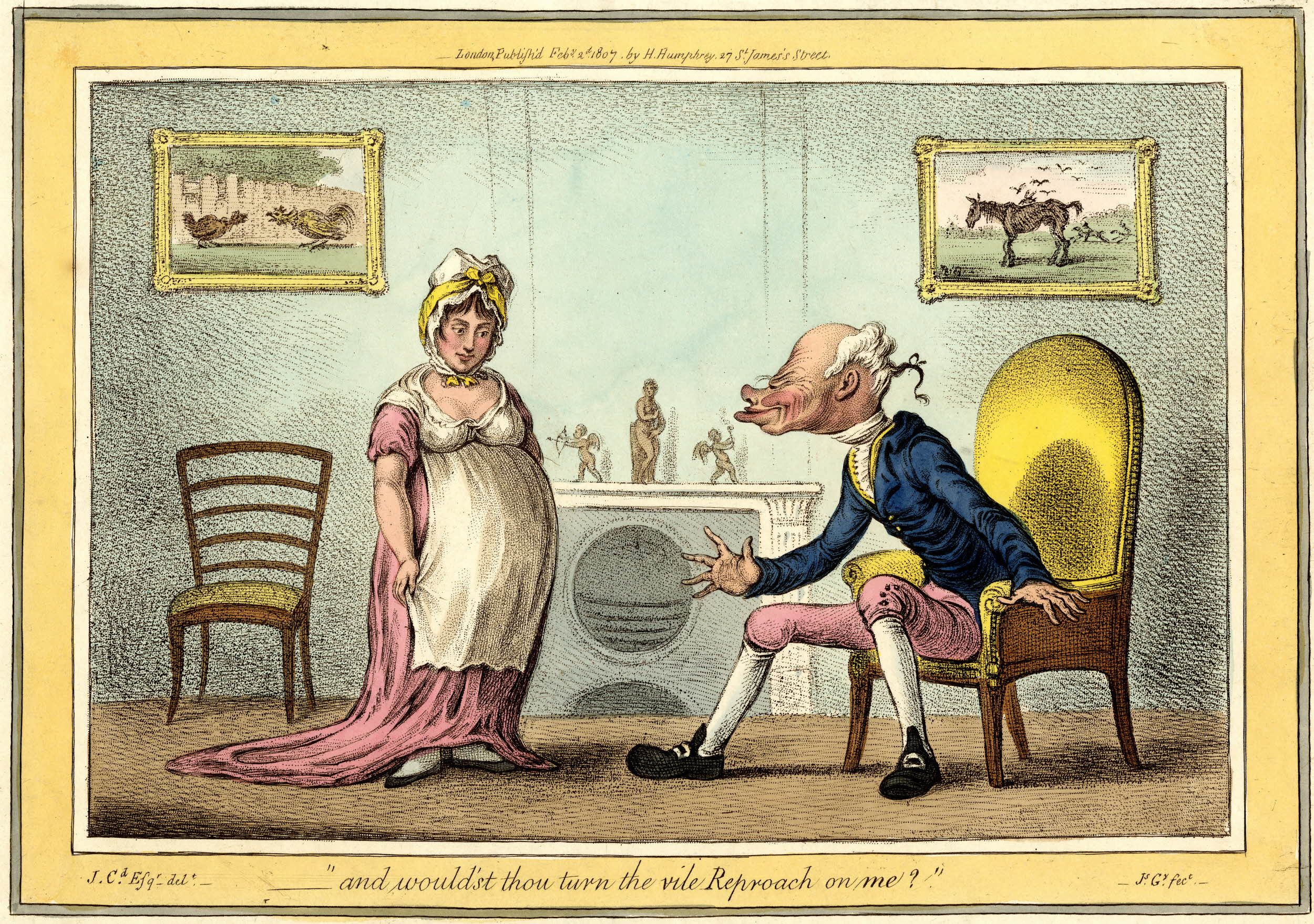
A grotesquely hideous man, lean and elderly, addressing a comely young woman who stands demurely, her pose accentuating her pregnancy. Print made by James Gillray. ©Trustees of the British Museum
A grotesquely hideous man addressing a pregnant young woman. Print made by James Gillray. ©Trustees of the British Museum
Dr Williams also uses the book to explore how the idea of ‘shame’ has frequently been associated with unmarried motherhood, noting that mothers and their illegitimate children were disgraced, abandoned and cast out by society, even by their own families, until the 1960s.
Attitudes towards the inherent shame of bearing illegitimate children waxed and waned over time, with post-Restoration attitudes softening as Britain underwent something of a sexual revolution in the late 1600s and early 1700s (the Foundling Hospital opening its doors in 1739). However, societal response to illegitimacy began to harden once more in the early 19th century.
The pursuit of errant fathers as a means of deflating local taxes was in place for centuries and until 1834, a father of illegitimate children was still responsible for paying for upkeep even if the mother married another man.
Williams suggests this negativity towards unmarried mothers grew in the years between the publication of Thomas Malthus’ Essay (1798) and the Poor Law Commission of 1832.
Malthus was famously critical of support for unmarried mothers alongside many other aspects of the 18th and 19th century ‘welfare state’ – and his views were profoundly influential on the Poor Law Commissioners who from the 1830s onwards made the provision of relief to poor, unmarried mothers much harder to come by.
"From the 1830s many more women went into workhouses and it was much harder to get relief. Conservative voices wanted to radically cut the amount of welfare and what it cost.
"If they did provide help, it was help with a heavy dollop of shame and reform.
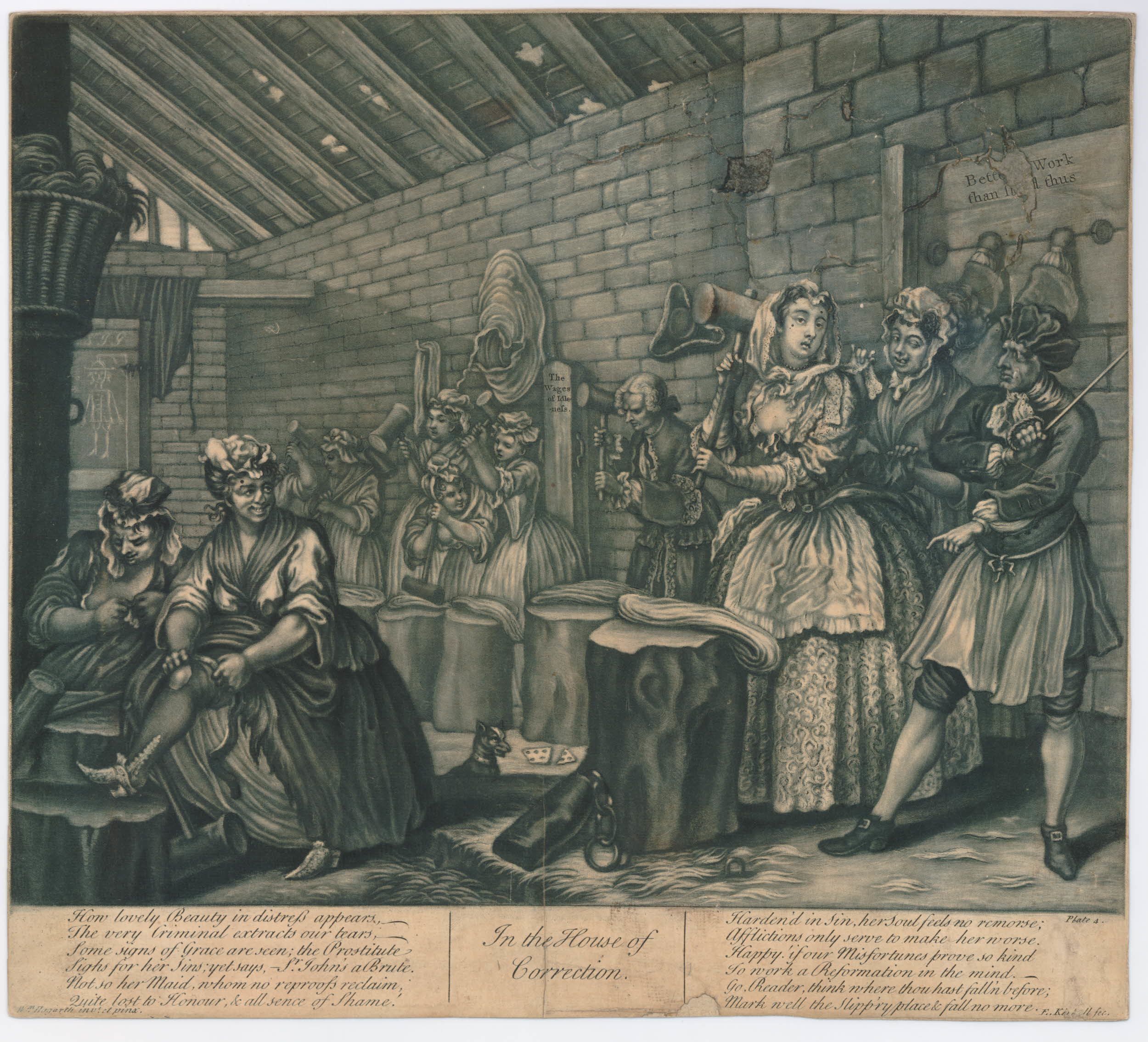
"Unwed women and their children were the casualties of a metropolitan sexual culture and a frequently unsympathetic welfare system.
"They faced very significant difficulties in their pregnancies, during childbirth and in raising their children, not least in the difficulties many women encountered in terms of gaining financial support from the fathers of their children."
Dr Samantha Williams
